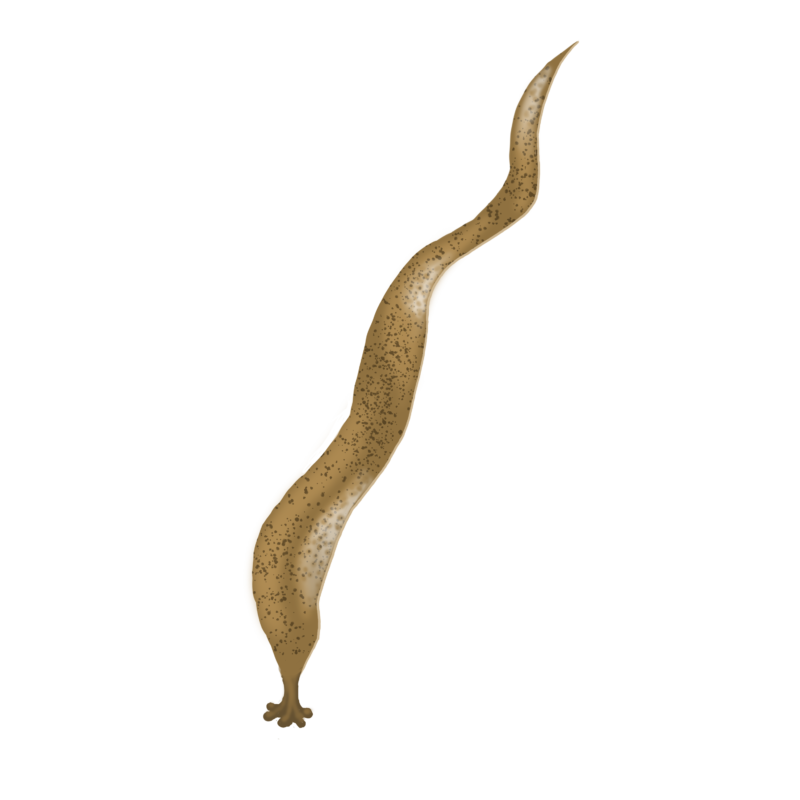
SIZE:
From 2 to 3 m.
LIFE EXPECTANCY:
Less than one year.
LIFE CYCLE:
In the Gaspé Peninsula, the fronds of leathery kelp are fertile from late September to December.
The alga releases spores, then dies, slowly degrading throughout the winter. The spores give birth to cells called gametophytes. It is in this form that the alga hibernates. The following spring, the gametophytes produce male and female reproductive cells. When these cells meet, new leathery kelp is formed.
The alga grows from the area between the stipe and the frond. Even if its tips are damaged, it will continue to grow.
Leathery kelp has very large blades, often split lengthwise and dotted with tufts of short hair. Its stipe is flat, flexible and tough. This alga is golden brown. It clings to the substrate by means of an umbrella-shaped holdfast with a fringe of long tubes.
Coastal zone, in cold waters.
This leathery kelp favours a turbulent environment, which ensures a constant renewal of the nutrients around it.
PREYS:
CO2
Solar energy
PREDATORS:
Herbivorous mol-luscs
Green urchins
MACHINES:
Hand harvesting.
REGULATIONS:
Permit required.
This alga is not yet harvested commercially, although it was grown experimentally in Québec in 2017.
Saccorhiza dermatodea is a Smarter seafood-listed species.
BENEFITS:
Little is known about the taste or commercial value of leathery kelp.
Generally speaking, algae are renowned for their health benefits. They are low in fat, and rich in fibre, vitamins and minerals. In particular, brown algae are rich in iodine, which is essential for the thyroid gland. However, a moderate intake is recommended, particularly for pregnant women or people at risk of thyroid problems.
LET’S COOK:
Little information is available.
Leathery kelp is probably similar to kombu for culinary purposes. Like a bay leaf, it is removed after cooking, leaving behind its taste-enhancing glutamates.
OUR CULINARY ADVICE:
The waters of the St. Lawrence are known for their good quality. However, as algae absorb the elements present in the water to grow, it is preferable to ensure that the harvesting site is clean before eating this species fresh.






